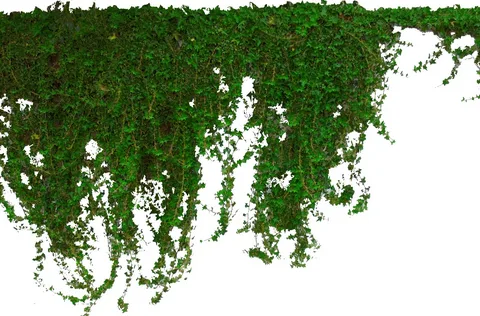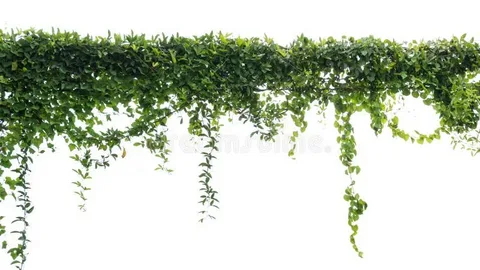Outline
- Introduction: What is Hanging Ivy?
- Why Choose Ivy for Hanging Baskets?
- Types of Ivy Plants for Hanging Baskets
- How to Care for Hanging Ivy
- Watering
- Light
- Temperature
- Soil
- The most effective method to Prepare Ivy to Fill in Hanging Bushels
- Normal Issues with Hanging Ivy and How to Fix Them
- How to Propagate Ivy
- Best Placement for Hanging Ivy
- How Often to Report Hanging Ivy
- FAQs About Hanging Ivy
- Can Ivy Be Grown Outdoors?
- How Do You Keep Ivy from Growing Too Long?
- Is Ivy Toxic to Pets?
- How Do You Revive a Sick Ivy Plant?
- Conclusion: Why Hanging Ivy is a Great Plant for Your Home
Introduction: What is Hanging Ivy?
In the event that you’re looking to add a rich vegetation to your own home, setting ivy can be the exact plant for you. Known for its following plants and thick foliage, ivy is an adaptable plant that might be utilized to make a staggering showcase in setting crates. Whether you’re an amateur gardener or a professional plant lover, setting ivy is simple to attend to and may thrive with minimum strive.
Hanging ivy refers to diverse species of ivy plants grown in packing containers which may be suspended inside the air, permitting their vines to cascade down fantastically. Ivy vegetation have lengthy, trailing stems that develop quickly and unfold out, making them best for putting arrangements. With a piece care, hanging ivy can thrive indoors, outside, or in any part of your own home that receives fantastic moderation.
Why Choose Ivy for Hanging Baskets?

Ivy flora are a notable desire for placing baskets for several reasons:
- Fast Growth: Ivy grows fast, this means that your placing baskets will fill out properly. Its trailing vines will spill over the edges, developing a stunning, cascading impact.
- Low Upkeep: Ivy vegetation are generally smooth to really focus on, making them incredible for fledglings. They’re strong, versatile, and can endure different ecological circumstances.
- Tasteful Allure: With their rich green foliage and flowing plants, ivy verdure transfer a chic, regular touch to any district
. They look outstanding in any room or outdoor area.
- Air Purification: Like many houseplants, ivy helps to purify the air. It absorbs toxins and provides oxygen for your indoor surroundings, making it each decorative and useful.
- Versatility: Ivy works well in both interior and outdoors, so it could be applied in a whole lot of settings, from putting baskets inside the residing room to decorative outside planters on a porch or balcony.
Types of Ivy Plants for Hanging Baskets
There are several kinds of ivy plant life that are nice for placing baskets. Some of the maximum popular types encompass:
English Ivy (Hedera helix)
English ivy is one of the greatest popular ivy types.
Its smooth, darkish inexperienced leaves and fast boom make it a favorite for placing baskets. English ivy is also pretty hardy and can develop in a huge sort of environment.It’s a traditional decision for both indoor and open air locales.
Brilliant Ivy (Hedera helix ‘Goldchild’)
Golden ivy capabilities lovely variegated leaves with an aggregate of green and gold. It provides a pop of color to striking baskets and prospers in similar conditions to English ivy. Golden ivy can tolerate low light however prefers incredible, indirect daylight hours.
Algerian Ivy (Hedera algeriensis)
Algerian ivy is every other high-quality range for striking baskets. It has huge, smooth leaves that expand fast and spread without issue. Algerian ivy can tolerate an entire lot of lighting situations however prefers slight to bright mild.
Irish Ivy (Hedera hibernica)
Irish ivy has smaller, darker green leaves in comparison to English ivy. It’s a great desire for putting baskets, as it has a dense increase in addiction and cascading vines. It’s a hardy range that’s properly-desirable for each indoor and outdoor putting preparations.
How to Care for Hanging Ivy
Caring for putting ivy is straightforward if you offer the proper conditions. Here’s what you need to recognise:
Watering
Ivy vegetation choose to be stored at the drier aspect however want regular watering. Overwatering is a commonplace mistake, as it could result in root rot. To make sure your ivy thrives, look at these tips:
- Water When Dry: Check the top inch of the soil. If it feels dry, it’s time to water.
- Don’t Overwater: Avoid letting the plant sit down in water, as this will cause root rot. Make certain your putting basket has drainage holes to allow extra water to interrupt out.
- Water Evenly: Water the soil evenly across the base of the plant, heading off the leaves to prevent rot and fungus.
Light
Ivy plants select bright, indirect, moderate, despite the fact that they may tolerate decreased mild conditions. Here’s the way to offer the proper mild in your ivy:
- Bright Indirect Light: Ivy flourishes while positioned near a window with filtered sunlight. A spot with moderation that isn’t too harsh is ideal.
- Avoid Direct Sunlight: Too much direct daylight can scorch the leaves. If you’re developing ivy indoors, try putting it via a window with sheer curtains or in a shaded location.
Temperature
Ivy plants are cool-climate flowers that do excellent in moderate temperatures. Keep your ivy at a temperature among 10°C (50°F) and 21°C (70°F). They don’t like warm conditions, so avoid setting them in spots near warmth sources like radiators or vents.
- Avoid Cold Drafts: Ivy can tolerate cooler temperatures however must be included from bloodless drafts. Keep your plant away from doors or domestic home windows that are regularly opened in the course of the iciness months.
Soil
Ivy thrives in well-draining soil that maintains moisture without becoming waterlogged. A proper exceptional houseplant potting mixture with delivered perlite or sand will work properly. Ensure that your setting basket has drainage holes to prevent water from pooling at the bottom.
The most effective method to Prepare Ivy to Fill in Hanging Bushels
One of the fine matters about ivy is its capability to cascade and spill over the sides of striking baskets. Here’s a way to inspire your ivy to expand fantastically:
- Start with a Healthy Plant: Choose a wholesome ivy plant with numerous trailing vines.
- Choose a Suitable Basket: Select a putting basket with correct drainage holes. If it’s too small, your ivy might also become root-sure and struggle to develop.
- Pinch Back New Growth: To encourage fuller, bushier boom, pinch decrease lower back the hints of latest vines. This will inspire lateral increase, making your ivy appear extra colorful.
- Provide Support: While ivy obviously cascades down, it may now and again gain from a bit manual. You can lightly tie vines to a trellis or allow them to maintain freely.
Normal Issues with Hanging Ivy and How to Fix Them
While ivy is a hardy plant, it could face some issues sometimes. Here’s a way to troubleshoot not unusual ivy troubles:
Yellowing Leaves
Yellowing leaves are much of the time a sign of overwatering or underwatering.
- Solution: Check the soil’s moisture level and adjust your watering behavior hence. Ivy prefers barely dry soil among waterings.
Leggy Growth
If your ivy is developing prolonged, thin vines with sparse leaves, it’s a signal it’s no longer getting sufficient light.
- Solution: Move your plant to a brighter spot with indirect daylight hours. Trim once more leggy vines to encourage a more compact boom.
Pests
Ivy can enchantment to commonplace pests like aphids, spider mites, or mealybugs.
- Solution: Inspect the leaves regularly for pests. If you spot any, deal with your ivy with insecticidal cleaning soap or neem oil to keep pests at bay.
How to Propagate Ivy
Ivy is simple to propagate, making it easy to grow extra plants or percentages with friends. Here’s how you may propagate ivy:
- Cut a Healthy Stem: Using sharp scissors or pruning shears, lessen a healthy four-6 inch stem from your ivy plant. Make sure the reducing has as a minimum or three leaves connected.
- Remove Lower Leaves: Strip the leaves from the lowest 2-3 inches of the slicing.
- Place in Water: Place the lowering in a tumbler of water, making sure the bare stem is submerged however the leaves are above water.
- Wait for Roots to Grow: Change the water each few days till roots start to expand. Once the roots are some inches prolonged, switch the cutting to soil.
Best Placement for Hanging Ivy
Choosing the proper spot on your ivy is fundamental to its achievement. Here are a few extremely good options:
- Near a Window with Indirect Light: Ivy will do well in a niche that receives plenty of vibrant, filtered light. A window with sheer curtains is good.
- In the Kitchen: Ivy can do properly in kitchens with sufficient natural mild. It’s amazing for placing baskets above countertops or in home windows.
- On the Patio: In warmer climates, ivy also can be utilized in putting baskets out of doors. It thrives in partial coloration and is ideal for porches or balconies.
How Often to Report Hanging Ivy

Ivy doesn’t want commonplace repotting, however you have to repot it every 1-2 years to provide it extra region to increase. Look for symptoms and signs and symptoms like root-sure increase or horrific drainage to decide while it’s time to report. Choose a pot that’s virtually one period larger than the cutting-edge field to keep away from waterlogging.
FAQs About Hanging Ivy
Can Ivy Be Grown Outdoors?
Yes, ivy can be grown outdoors in regions with slight temperatures. It’s nice for shaded or partly shaded spots. Just ensure to shield it from freezing temperatures.
How Do You Keep Ivy from Growing Too Long?
To prevent ivy from becoming too lengthy, trim it frequently. You can also pinch again a new boom to keep the plant bushier and extra compact.
Is Ivy Toxic to Pets?
Yes, ivy is toxic to pets if ingested. Keep your ivy out of reach of pets, especially when you have cats or puppies that generally have a tendency to chunk on plants.
How Do You Revive a Sick Ivy Plant?
If your ivy is called risky, test its watering everyday, mild conditions, and pest state of affairs. Cut back any useless or damaged leaves, and try transferring the plant to a niche with extra moderate or much less humidity.
Conclusion: Why Hanging Ivy is a Great Plant for Your Home
Hanging ivy is a really rewarding plant to increase, whether or not you’re a pro plant fanatic or just beginning your inexperienced adventure. Its lush green vines, rapid-growing nature, and smooth care requirements make it an outstanding choice for any home or out of doors place.
By supplying the proper care—proper light, watering, and occasional trimming—you may revel in a wholesome, stunning hanging ivy plant year-spherical. Whether you’re inclusive of it in your living room, kitchen, or balcony, ivy brings a herbal, calming touch to any environment. Plus, with its ability to purify the air and propagate without problem, it’s a plant that maintains on giving.
So, grasp a putting basket, discover the precise spot, and permit your ivy to thrive!
